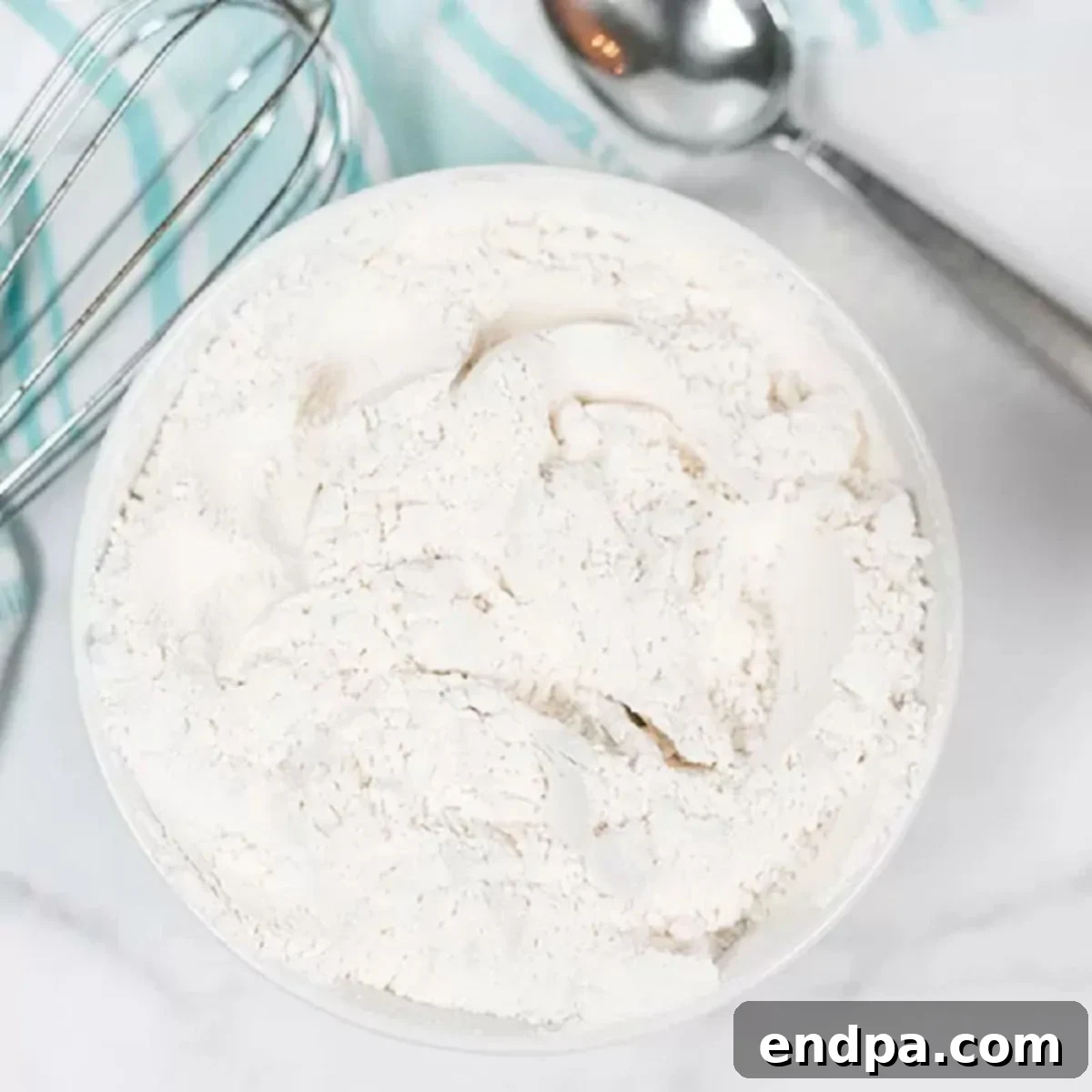Unlock the secret to incredibly tender and soft baked goods by learning How to Make Cake Flour right in your own kitchen. With just two common ingredients, you can create a perfect substitute for store-bought cake flour, saving both time and money. Say goodbye to last-minute grocery store runs and hello to consistently light and airy cakes, cupcakes, and more!
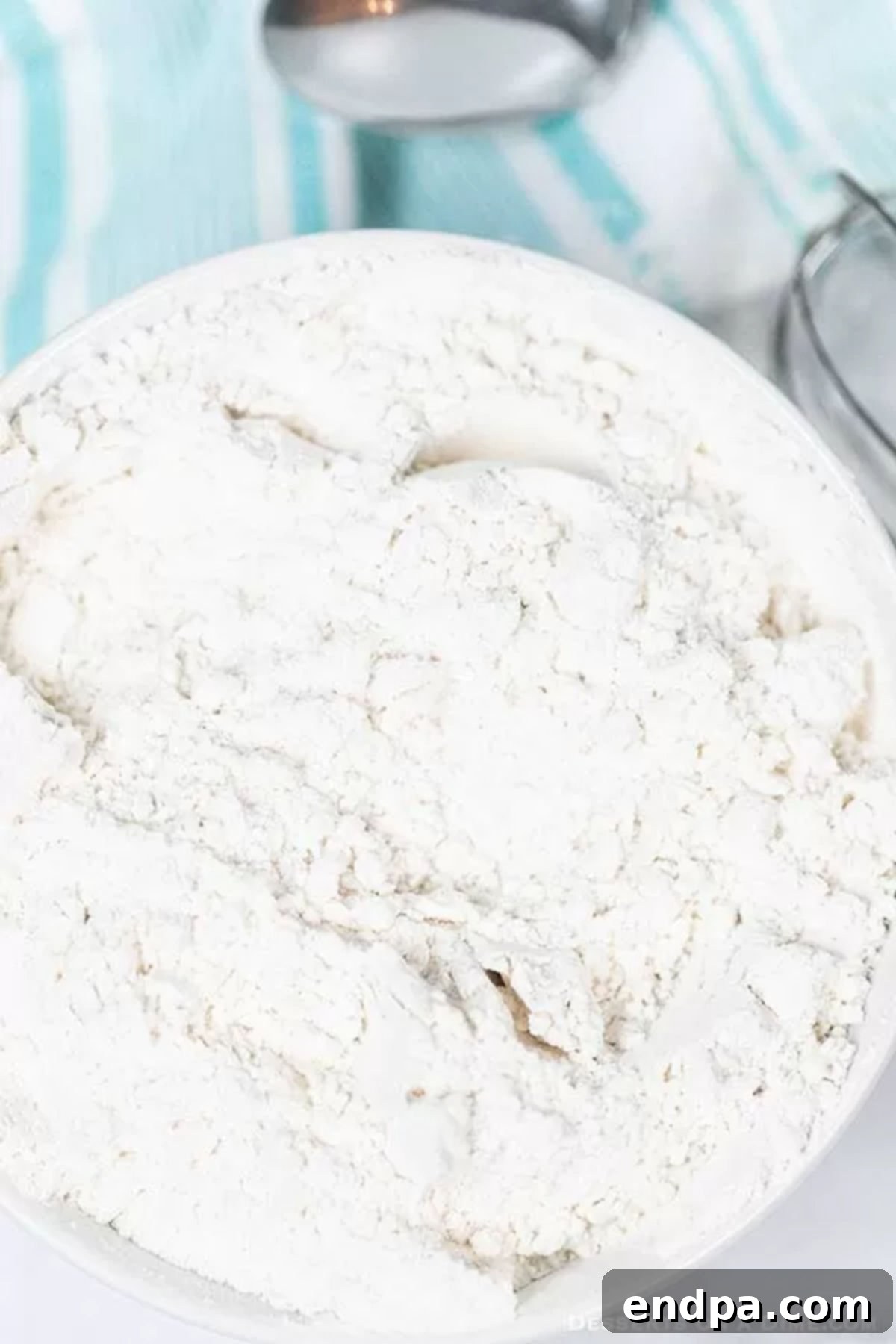
Once you discover the remarkable simplicity and effectiveness of this homemade cake flour recipe, you’ll wonder why you ever bought it from the store. This simple hack takes literally minutes to prepare, offering unparalleled convenience and significant savings. Imagine having the key ingredient for delicate desserts always at your fingertips, without the need to rush out or navigate busy checkout lines.
This effortless method ensures you’re always prepared for any baking adventure that calls for cake flour, making your baking process smoother and more enjoyable. It’s a fundamental trick every home baker should know, elevating your results from good to truly exceptional.
Beyond this essential baking hack, I also enjoy crafting other homemade staples, such as my Homemade Brown Sugar Recipe, which adds another layer of freshness to my culinary creations.
Table of Contents
- How to Make Cake Flour at Home: The Ultimate Baking Hack
- Why Make Homemade Cake Flour? The Secret to Superior Baked Goods
- Understanding Cake Flour: What Makes It Unique?
- Ingredients for Homemade Cake Flour: Simple & Accessible
- Step-by-Step Instructions: Creating Your Own Cake Flour in Minutes
- Tips for Best Results with Homemade Cake Flour
- Frequently Asked Questions About Cake Flour and Its Substitutes
- Storage of Homemade Cake Flour: Keeping It Fresh
- Recipes That Benefit from Homemade Cake Flour
How to Make Cake Flour at Home: The Ultimate Baking Hack
Why Make Homemade Cake Flour? The Secret to Superior Baked Goods
Bakers often rave about the superior texture that cake flour imparts to their creations, and for good reason. The magic lies in its significantly lower protein content compared to standard all-purpose flour. Protein in flour develops gluten when mixed with liquid, and while gluten is essential for chewy breads, too much of it can make delicate cakes tough and dense.
Cake flour, typically milled from soft wheat, has a protein content of about 8-9%, whereas all-purpose flour ranges from 10-12%. This lower protein level minimizes gluten formation, resulting in a finer, softer crumb that is characteristic of professional-quality cakes, cupcakes, and pastries. By making your own cake flour at home, you harness this benefit, ensuring your baked goods are consistently tender, light, and wonderfully moist.
Beyond cakes, this special flour can transform other baked goods. It’s perfect for creating incredibly tender biscuits that melt in your mouth, light and fluffy scones, or delicate pancakes and waffles that achieve a perfect golden crispness. Many enthusiastic home bakers, myself included, frequently substitute all-purpose flour with homemade cake flour in a variety of recipes because of the noticeable improvement in texture and taste.
Furthermore, convenience and cost savings are significant advantages. While specialty cake flour can be found in most grocery stores, it’s often more expensive and not always readily available when you need it most. Having a simple, two-ingredient recipe on hand means you’ll never be caught without this essential baking ingredient, allowing you to whip up beautiful desserts on a whim.
Understanding Cake Flour: What Makes It Unique?
Cake flour is more than just a type of flour; it’s a finely milled ingredient specifically designed to produce exceptionally tender and delicate baked goods. Its defining characteristic is its low protein content, typically between 8-9%. In contrast, all-purpose flour usually contains 10-12% protein, and bread flour can go as high as 12-14%.
The protein in flour forms gluten when hydrated and kneaded. Gluten provides structure and elasticity, which is desirable in breads and chewy items. However, for cakes, a strong gluten network can lead to a tough, rubbery texture. Cake flour’s low protein content minimizes gluten development, allowing for a tender, fine crumb that is light and airy. Additionally, commercial cake flour is often chlorinated, which further weakens the protein bonds and helps the flour absorb more liquid and sugar, contributing to a moist, structurally sound cake.
Our homemade version effectively mimics these properties by diluting the protein content of all-purpose flour with cornstarch. Cornstarch is a pure starch with no protein, so when combined with all-purpose flour, it lowers the overall protein percentage, creating a flour mixture that behaves very similarly to commercial cake flour.
Ingredients for Homemade Cake Flour: Simple & Accessible
Crafting your own cake flour substitute couldn’t be easier, requiring just two staple ingredients that you likely already have in your pantry. The precise ratio is crucial for achieving the desired effect, so pay close attention to the measurements.
- All-Purpose Flour: This is the foundation of our homemade cake flour. Use a good quality, unbleached all-purpose flour. Since we are reducing its protein content, the initial protein level of your all-purpose flour will influence the final result. Most standard brands will work perfectly.
- Cornstarch: The secret ingredient! Cornstarch is a pure starch with no protein. When mixed with all-purpose flour, it effectively “dilutes” the protein concentration, mimicking the lower gluten-forming properties of commercial cake flour. This results in the soft, delicate crumb that bakers adore.
You’ll find the complete ingredient list and precise measurements further down in the recipe card, ensuring you have everything you need to get started.
Step-by-Step Instructions: Creating Your Own Cake Flour in Minutes
Making cake flour at home is incredibly straightforward, a process that can be completed in less than five minutes. Follow these simple steps to ensure you achieve the perfect texture for your baking projects.

Step 1 – Measure and Adjust Flour: Begin by precisely measuring 1 cup of all-purpose flour into a measuring cup. Once measured, carefully remove 2 level tablespoons of flour from that cup. It’s important to level each tablespoon accurately to maintain the correct ratio. This removed flour will be replaced by cornstarch to reduce the overall protein content.
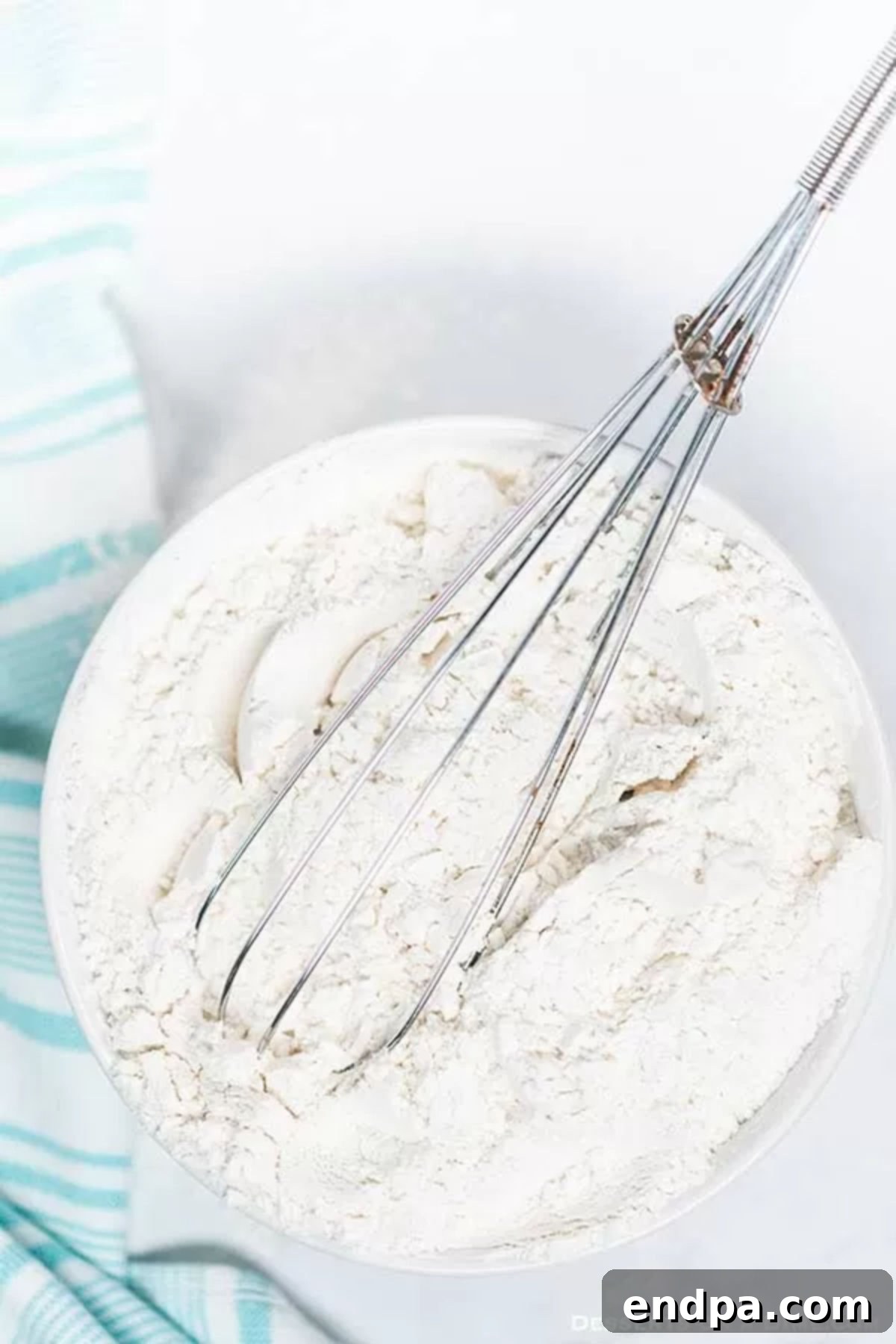
Step 2 – Combine with Cornstarch: To the remaining flour in your measuring cup (which should now be 1 cup minus 2 tablespoons), add 2 level tablespoons of cornstarch. Transfer this mixture to a medium-sized mixing bowl. Use a whisk to thoroughly combine the flour and cornstarch. Ensure there are no lumps and the cornstarch is evenly distributed throughout the flour.
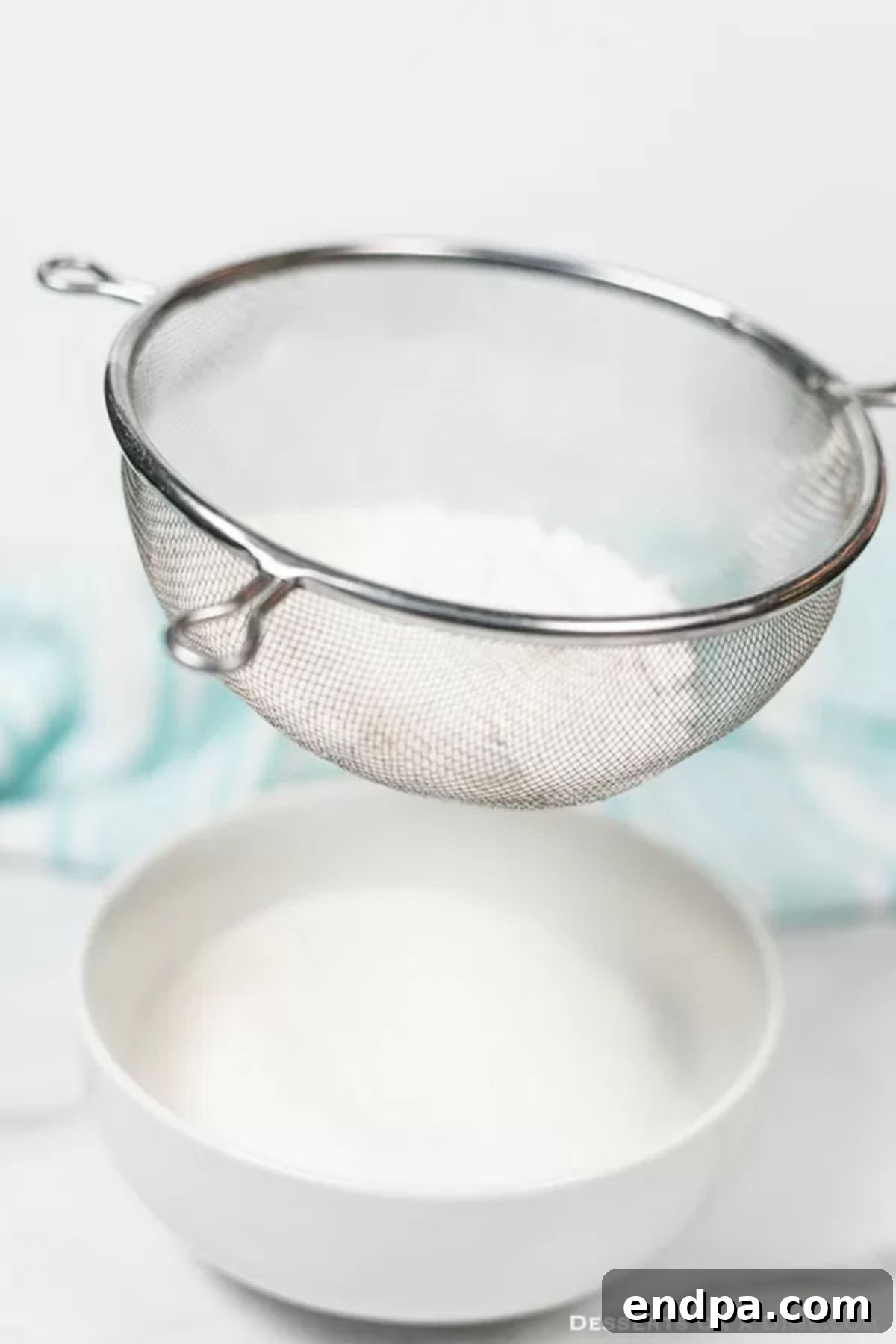
Step 3 – Sift for Perfection: Place a fine-mesh sieve over another clean bowl. Pour the flour and cornstarch mixture into the sieve and sift it through. Repeat this process, sifting the mixture a second time. Sifting is a crucial step as it not only aerates the flour, making it lighter, but also ensures the cornstarch is perfectly integrated and evenly distributed, preventing any pockets of pure cornstarch. While some bakers recommend sifting 4-5 times for ultimate lightness, I’ve found that twice is perfectly sufficient for excellent results.
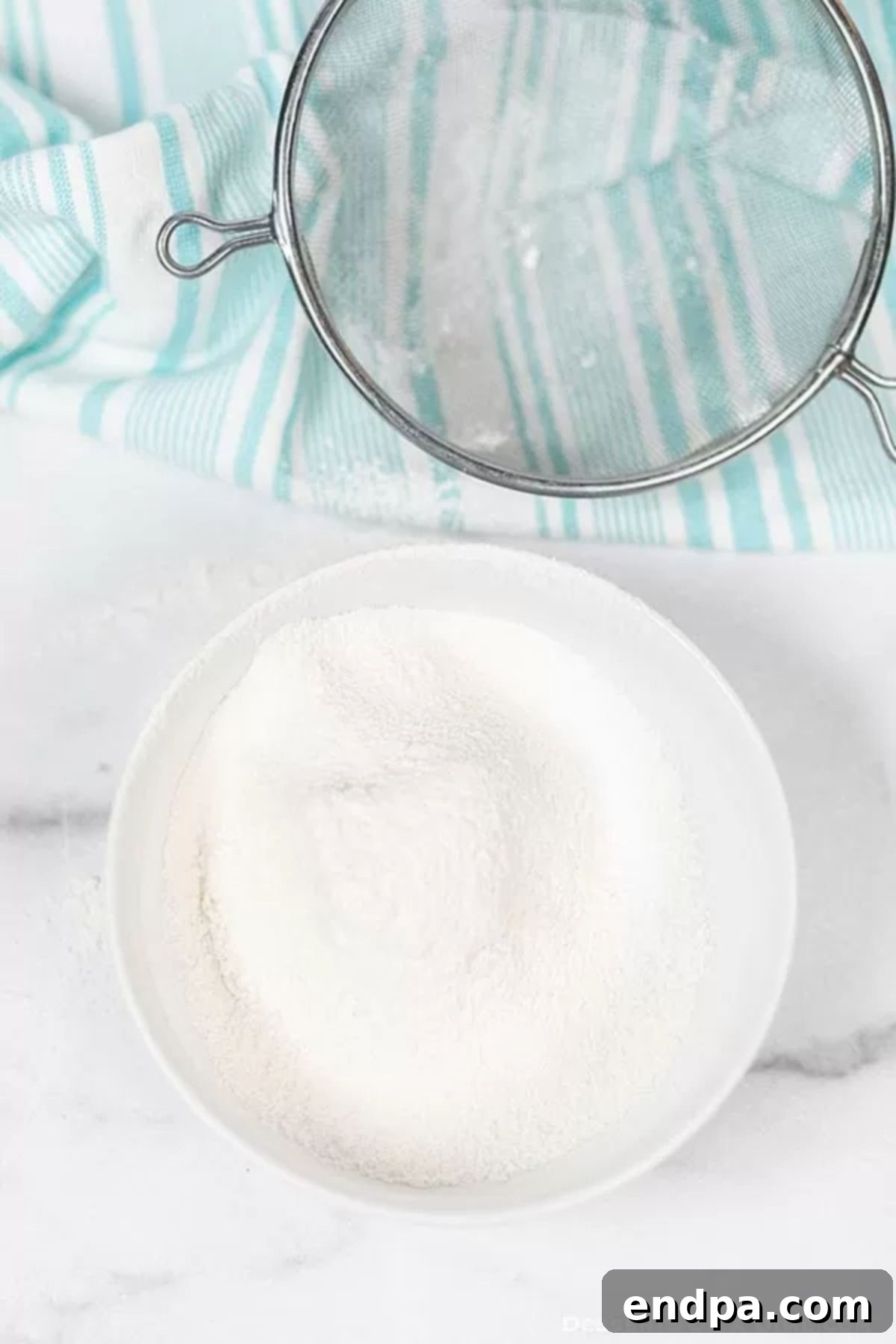
Step 4 – Ready to Use: Congratulations, you now have 1 cup of homemade cake flour! This entire process is incredibly simple, cost-effective, and delivers results comparable to expensive store-bought versions. Your newly made cake flour is ready to be used immediately in any recipe calling for it, ensuring your baked goods will have that sought-after delicate crumb.

Tips for Best Results with Homemade Cake Flour
- Accurate Measurement is Key: Always spoon your all-purpose flour into the measuring cup and level it off with a straight edge (like the back of a knife) before removing the two tablespoons. This ensures you start with the correct amount of flour. Avoid scooping directly with the measuring cup, as this can compact the flour and lead to over-measurement.
- Sift Thoroughly: Don’t skip the sifting step, and performing it twice is truly beneficial. This not only blends the cornstarch evenly but also aerates the flour, resulting in a lighter final product.
- Scale as Needed: This recipe yields one cup of cake flour. If your recipe calls for more, simply multiply the ingredients. For every cup of cake flour needed, start with 1 cup of all-purpose flour, remove 2 tablespoons, and replace with 2 tablespoons of cornstarch, then sift.
- Fresh Ingredients: Always use fresh all-purpose flour and cornstarch for the best flavor and texture in your baked goods.
Frequently Asked Questions About Cake Flour and Its Substitutes
While cake flour excels at creating soft, tender textures, making it ideal for delicate cakes, cookies, and muffins, it’s not mandatory for all recipes. For items where a chewy or robust texture is desired, such as artisan breads, dense cookies, or certain pie crusts, all-purpose flour might be a better choice. However, for those seeking a consistently light and airy crumb in their homemade baked goods, using cake flour is a fantastic option. Ultimately, the choice depends on your desired outcome and personal preference, but experimenting with cake flour can significantly enhance the quality of your desserts.
The “best” flour truly depends on the specific baked good you’re making and its desired characteristics:
- All-Purpose Flour: A versatile staple, it’s suitable for a wide range of recipes due to its medium protein content (10-12%). It’s excellent for everyday cookies, quick breads, pie crusts, biscuits, and pasta, providing a good balance of structure and tenderness.
- Cake Flour: Characterized by its low protein content (8-9%), cake flour is specifically designed for delicate baked goods. It’s the top choice for white cakes, vanilla cakes, angel food cakes, chiffon cakes, delicate cupcakes, and tender muffins where a soft, fine, and fluffy crumb is paramount.
- Bread Flour: With the highest protein content (12-14%), bread flour promotes strong gluten development, making it perfect for yeast-leavened breads, pizza dough, bagels, and other chewy baked goods that require significant structure and elasticity.
Cake flour, also sometimes referred to as pastry flour, is a specialized type of flour milled from soft wheat. Its most significant distinction is its low protein content, typically ranging from 8% to 9%. This low protein level means that when the flour is mixed with other ingredients and liquid, less gluten is formed. Gluten is the elastic protein network that gives baked goods structure. For cakes and delicate desserts, a minimal gluten network is desirable because it results in a softer, more tender, and fluffy texture. Commercial cake flour often undergoes a bleaching process (chlorination) that further weakens protein bonds and helps the flour absorb more moisture and sugar, leading to incredibly moist and structurally sound cakes. Popular brands available in stores include Swans Down, Softasilk, and King Arthur Unbleached Cake Flour, but with our simple recipe, you can achieve similar results at home.
When a recipe specifically calls for cake flour, and you only have all-purpose flour, you can easily create our homemade substitute by removing 2 tablespoons of all-purpose flour from a 1-cup measure and replacing them with 2 tablespoons of cornstarch, then sifting. This effectively lowers the protein content to mimic cake flour.
Conversely, if a recipe calls for all-purpose flour and you wish to use cake flour for a softer crumb, you can often substitute it directly cup-for-cup. However, be aware that the lower protein content of cake flour might result in a slightly more delicate structure, especially in recipes that rely on gluten for strength (like some chewy cookies). For most delicate cake, muffin, or cupcake recipes, a direct 1:1 substitution works well.
No, traditional cake flour, whether store-bought or homemade, does not contain any leavening agents. It is an unbleached or bleached flour without added baking powder or baking soda. Therefore, when using cake flour in your recipes, you will need to add the specified amounts of baking soda, baking powder, or other leavening agents as required by your recipe to ensure your baked goods rise properly and achieve the desired lightness and texture.
While cornstarch is the most common and widely recommended starch for this homemade cake flour substitute due to its neutral flavor and fine texture, you can experiment with other starches. Arrowroot powder or tapioca starch are potential alternatives, though they may slightly alter the final texture or flavor. Cornstarch is generally preferred for its consistency and availability.
Homemade cake flour, using the all-purpose flour and cornstarch method, is an excellent substitute that closely mimics the properties of commercial cake flour. It effectively lowers the overall protein content, leading to a more tender crumb. While commercial cake flour sometimes benefits from a bleaching process that can further alter protein structure and absorption, the homemade version provides very comparable results for home baking. Many bakers find the difference negligible for most recipes, making the homemade version a convenient and cost-effective alternative.
Storage of Homemade Cake Flour: Keeping It Fresh
Proper storage is essential to maintain the quality and freshness of your homemade cake flour substitute. Once you’ve prepared a batch, whether for immediate use or to keep on hand, follow these guidelines:
- Airtight Container: Always store your homemade cake flour in a clean, dry, airtight container. Glass jars with tight-fitting lids or sturdy plastic containers with sealed closures work best. This prevents moisture, air, and pantry pests from compromising its quality.
- Cool, Dark Place: Keep the container in a cool, dark, and dry place, such as your pantry or a kitchen cupboard away from direct sunlight and heat sources. Humidity and heat can cause flour to spoil faster or develop lumps.
- Shelf Life: Stored correctly, homemade cake flour should last as long as the expiration date of the all-purpose flour you used, typically several months up to a year. While cornstarch has a very long shelf life, it’s always best to use it within the suggested timeframe for optimal freshness. Always check for any off-odors or signs of spoilage before use.
Recipes That Benefit from Homemade Cake Flour
The delicate texture achieved with cake flour makes it an indispensable ingredient for a variety of beloved desserts. Here are some fantastic recipes where your homemade cake flour will truly shine, creating results that are exceptionally light, moist, and tender:
- Red White and Blue Cupcakes: These festive cupcakes will be incredibly light and fluffy, perfect for any celebration.
- Easy Carrot Cake Cupcakes: The fine crumb of cake flour ensures these rich, spiced cupcakes remain tender without becoming dense.
- Easy Homemade Vanilla Cake Recipe: For a classic vanilla cake, cake flour is paramount for achieving that signature soft, moist, and luxurious texture.
- Angel Food Cake: A cake flour staple, ensuring an ethereal, cloud-like texture.
- Chiffon Cake: The delicate structure of chiffon cakes relies heavily on the low-protein nature of cake flour for its signature lightness.
- Delicate Sugar Cookies: For sugar cookies that are melt-in-your-mouth tender rather than crisp and chewy.
Go ahead and try making this incredibly easy and versatile cake flour substitute. Whether you’re in a pinch or simply looking to elevate your baking, this effortless hack is a fantastic addition to your culinary repertoire. Don’t forget to come back and leave a comment once you’ve tried this game-changing cake flour substitution – we love hearing about your baking successes!
Homemade Cake Flour Substitute
5
5
1 cup
Baking Essential
Ingredient
Carrie Barnard
Ingredients
- 1 cup All-Purpose Flour (minus 2 tablespoons)
- 2 Tablespoons Cornstarch
Instructions
- Measure 1 cup of all-purpose flour into a measuring cup.
- Remove 2 level tablespoons of flour from the measured cup.
- Add 2 level tablespoons of cornstarch to the remaining flour in the cup.
- Transfer the flour and cornstarch mixture to a medium bowl and whisk thoroughly until fully combined.
- Sift the entire mixture through a fine-mesh sieve into another clean bowl. Repeat the sifting process a second time to ensure even distribution and aeration.
- Your homemade cake flour is now ready to use for 1 cup.
Nutrition Facts (Approximate per 1 cup homemade cake flour)
Calories 516kcal
,
Carbohydrates 110g
,
Protein 13g
,
Fat 1g
,
Saturated Fat 1g
,
Sodium 4mg
,
Potassium 134mg
,
Fiber 3g
,
Sugar 1g
,
Calcium 19mg
,
Iron 6mg
